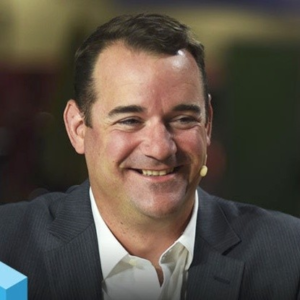
What HPE Sees in MapR Technologies

Hewlett Packard Enterprises surprised the computing world this morning with the announcement that it has acquired the struggling data platform company MapR Technologies. In an interview with Datanami, Patrick Osborne, HPE’s vice president and general manager of big data and secondary storage, describes why the deal makes sense for the technology giant.
Osborne, who will oversee the MapR product line, says the acquisition appealed to HPE for several reasons. For starters, even though HPE is generally averse to providing higher-level software like databases and applications, it likes the MapR technology. There are also a lot of large joint HPE-MapR customers that HPE wants to keep happy. Those appear to be the top two rationales for the deal.
“For us it’s a really great technology platform,” Osborne said. “It’s an opportunity to take that platform — and certainly the customers and all the great people who deliver that platform — into HPE. We’re really excited about the use cases around hybrid cloud, edge to core computing, and certainly the transition to AI and ML and containers. For us, we think it’s going to be a great fit.”
The MapR customer base is another aspect of the deal. MapR customers include blue chips like American Express, Boehringer Ingelheim, Cisco, E&J Gallo Winery, Novartis, Samsung, TransUnion, UnitedHealthcare, and Whiting Petroleum. Osborne pointed out that HPE and MapR share a number of common customers, including Fortune 500 and Global 2000 customers “who are using it at scale in very mission-critical, business-critical environments” every day.
Keeping these customers happy, as opposed to letting their MapR investments drift in the wind – as the future of MapR and its product have been since troubles at the company were first made public in May — appears to be a priority at HPE.
While Osborne would not confirm whether HPE was the unidentified company that MapR says it was close to signing a deal with in mid-June, he did say that the technology giant has long admired MapR and its software, to the point where HPE may have made a play to acquire MapR even if things did not play out as they had.

MapR had already positioned its data platform for the post-Hadoop era, including support for hybrid and multi-cloud deployments
“We’ve been partnering with MapR for a very long time, because of the strength of its technology and certainly its customer base. We’ve been interested in this probably back to 2015,” Osborne said. “So for us, it’s been something that we’ve either wanted to have part of HPE or very closely partner with. And we’ve been working with them for some time on seeing what we could do to make this happen.”
HPE executives have been quite adamant that the company does not want to turn into a software company. At the HPE Discover event in June, executives repeated the mantra to Datanami several times. Instead of writing and selling specialized software, the company would much rather partner with existing software providers, and be that trusted partner in the middle whose job is to stitch everything up into an end-to-end solution, running atop HPE servers, storage, and networking, of course.
Osborne says the MapR deal doesn’t deviate far from that course, since MapR isn’t selling high-level software. Instead, it’s following much the same path that it did in November, when it acquired BlueData, which develops software for deploying Hadoop, Spark, and other big data infrastructure in containerized environments.
“I’m not sure we want to be an application vendor – the toolsets themselves, the databases. That’s a little bit upstack for HPE,” Osborne said. “But being able to provide a data fabric and an orchestration layer and those types of assets, whether they be infrastructure or software, is something we definitely want to do.”
While Osborne did admit that HPE is moving upstream a tad with MapR, the firm’s capabilities in delivering software-defined storage and data fabrics in support for new applications like streaming data and AI/ML was a bigger factor than obtaining a way to abstract storage protocols like NFS, block storage, and LUNs, he said.
“I think we’re definitely going further upstream, not to the point of providing complete end user applications, but providing an ecosystem for the customers,” he said. “I think it’s an opportunity for us.”
While MapR has sought to distance itself from Hadoop by delivering a data platform that not only provides access to HDFS and Apache Hadoop but a range of other data services, investors may not have gone along, if the company’s difficulties in finding funding are any indication. The acquisition of Hortonworks by Cloudera in January, and Cloudera’s subsequent trouble closing deals in the first quarter, which led to Cloudera CEO Tom Reilly’s ouster in June, are evidence that the market has turned on Hadoop.
HPE, which dabbled with Hadoop years ago with its HAVEn offering, clearly has a more nuanced view on MapR’s connections to Hadoop, both good and bad.
“My goal here at HPE is not to be just another Hadoop distribution,” Osborne said. “We currently partner with Cloudera and we’re going to continue partnering with Cloudera at the worldwide and field level…For me the acquisition is centered around a data-oriented vision, as opposed to just being a Hadoop distribution.”
Equating MapR with Hadoop is selling the platform short, Osborne said. “At the end of the day, it’s a very scalable file system and very scalable database technology that a lot of customers use as a data fabric to plug in multiple applications on top of it, as opposed to calling it HDFS, for example,” he said. “For me I see a path forward for technology to be used in some new and exciting use cases.”
With that said, Osborne says he thinks Hadoop still has a future. That may put him at odds with Wall Street and others who have labeled Hadoop a “legacy” technology, but it also demonstrates a pragmatism and understanding how enterprise IT product lifecycles are designed to squeeze value from existing investments, even if they are (gasp!) over 10 years old, like Hadoop.
“We have customers that run Cloudera and Hortonworks or some derivative of those two on our infrastructure,” the HPE exec said. “Many of our customers that deploy BlueData have one or the other of those distributions. So absolutely [Hadoop has a future]. It’s a tool and a part of people’s data pipelines, so we’ll continue to support that. You’ve seen the pivot to streaming and AI and ML workloads as those data pipelines get longer and evolve, so I think that’s where there’s quite a bit of opportunity as well.”
HPE will try to retain as many existing MapR employees as possible, Osborne said. Priority will be given to retaining engineers, product delivery and product success teams, he said. The company will also try to retain senior leadership, he said, but it was not immediately clear if MapR CEO and co-founder John Schroeder would have a place at HPE. Considering that Schroder had previously stepped aside to let former Oracle executive Matt Mills run MapR, it seems likely that HPE is not in Schroeder’s long-term plans.
The focus for HPE is currently on customer retention, with an eye to integrating MapR with BlueData and possibly other HPE products going forward, Osborne said.
“We will be talking to customers, setting them up for renewals and expansion and even new business I’d say in the six to 12 to 18 month horizon,” he said. “And as we start to endeavor on newer use cases, [the existing MapR products] may end up in different or separate products, or integrated with exiting HPE products, so we’ll have to cross that bridge when we get there.”
Related Items:
MapR Says It’s Close to Deal to Sell Company
Hadoop Struggles and BI Deals: What’s Going On?
































